14 Best Brussels Sprout Varieties to Grow at Home (with Pictures)
-
Visnja Radosavljevic
- Last updated:
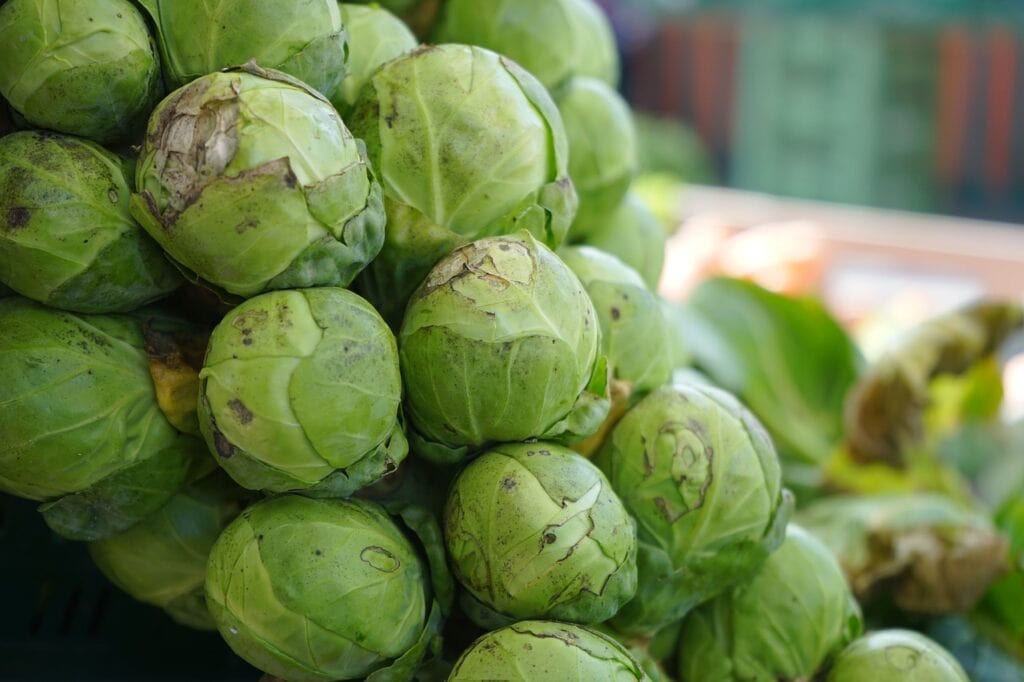
Brussels sprouts are delicious, crunchy vegetables and are popular worldwide. As the interest in these tasty veggies began to rise, the number of available varieties of Brussels sprouts increased. Some of the varieties are still famous today, while others have disappeared.
If you want to plant Brussels sprouts but can’t decide on the variety you want to grow, the list below should help you make a decision.
We’ll talk about the 14 best Brussel sprout varieties to grow at home, so read on to learn more about each species.
The 14 Brussels Sprout Varieties to Grow at Home
1. Catskill
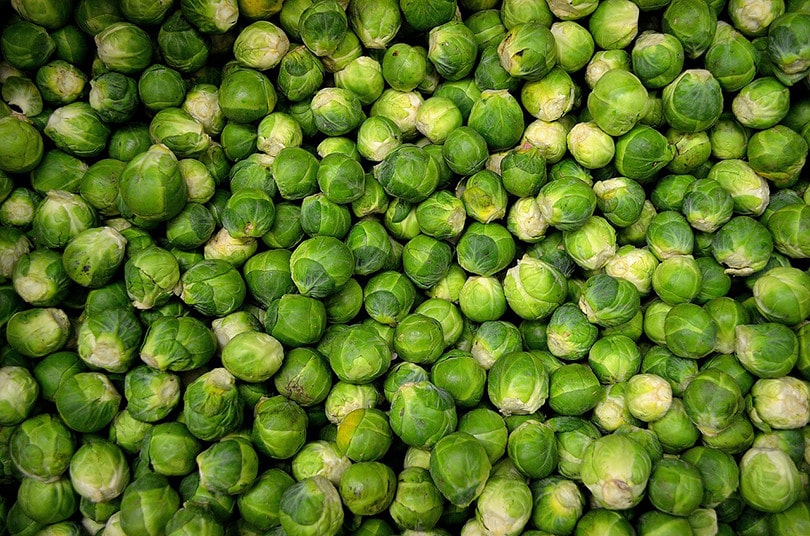
| USDA Hardiness Region: | 4 to 7 |
| Sun: | At least 6 hours of direct sunlight |
| Soil: | Moist, fertile |
Catskill is one of the most popular Brussels sprout species today because it has extremely large heads. This is an heirloom variety, discovered back in 1941 by Arthur White. Catskill is also known for its long 24-inch stems. This variety won’t give you a huge harvest as every stalk only holds around 10 heads. However, catskill has a lovely, rich flavor and good freezing qualities, which makes it stand out. This species needs between 90 and 110 days to reach maturity.
- Large heads
- Lovely, rich flavor
- Good freezing qualities
- Small harvest
2. Green Gems
| USDA Hardiness Region: | 3 to 8 |
| Sun: | At least 6 hours of direct sunlight |
| Soil: | Fertile, well-draining, moist |
Green Gems have earned their name as they’re small in size with a diameter of only ½ an inch. These miniature sprouts are emerald green and have a slightly earthy, buttery flavor. The tree of these Brussels sprouts can reach 3 feet, so it might need space to grow upright. One of the best things about green gems is they only need 85 days to mature, which is way faster than other Brussel sprouts varieties. The sprouts have a good shelf life, so you can store them after harvest.
- Matures faster than most other varieties
- Good shelf life
- Small in size
3. Octia
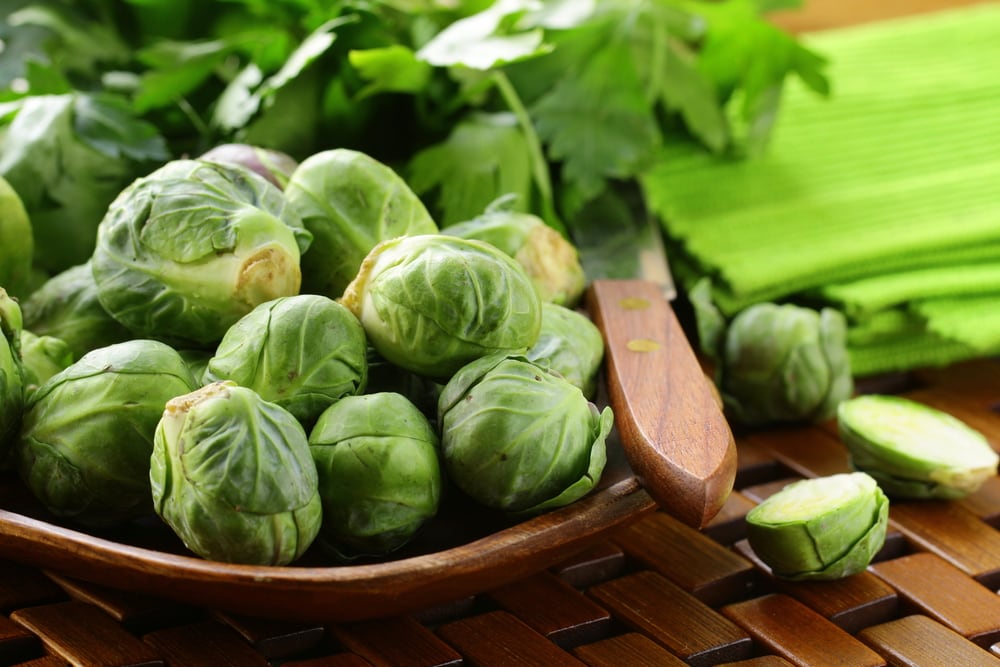
| USDA Hardiness Region: | 3 to 9 |
| Sun: | At least 6 hours of direct sunlight |
| Soil: | Fertile, well-draining, moist |
Octia is one of the most fast-maturing Brussels sprouts varieties, and it reaches maturity in 78 days. This species has uniform 1-inch heads, and there are a lot of veggies on single plants. To increase your harvest, you can top your octia. You would need to cut the main branch before sprouts develop to prevent it from growing taller and encourage it to produce larger sprouts. The stalks of this variety can get up to 36 inches tall, which promotes airflow.
- Matures faster than most other varieties
- Good airflow
- You need to top the plant for a better harvest
4. Diablo
| USDA Hardiness Region: | 5 to 8 |
| Sun: | At least 6 hours of direct sunlight |
| Soil: | Well-draining, moist |
Diablo is a hybrid variety with excellent cold tolerance qualities. This species can reach over 2 feet, providing you with a good harvest. Its heads are typically smooth and medium-sized. These sprouts stand out for their taste, as they are sweet but nutty. They have good freezing qualities and taste even better after freezing. Diablo needs around 110 days to mature and become harvest-ready. Since this variety is cold tolerant, you can plant it in late fall and wait for sprouts in spring.
- Cold tolerant
- Good harvest
- Large
- Sweet, nutty flavor
- Good freezing qualities
- Takes long to reach maturity
5. Churchill
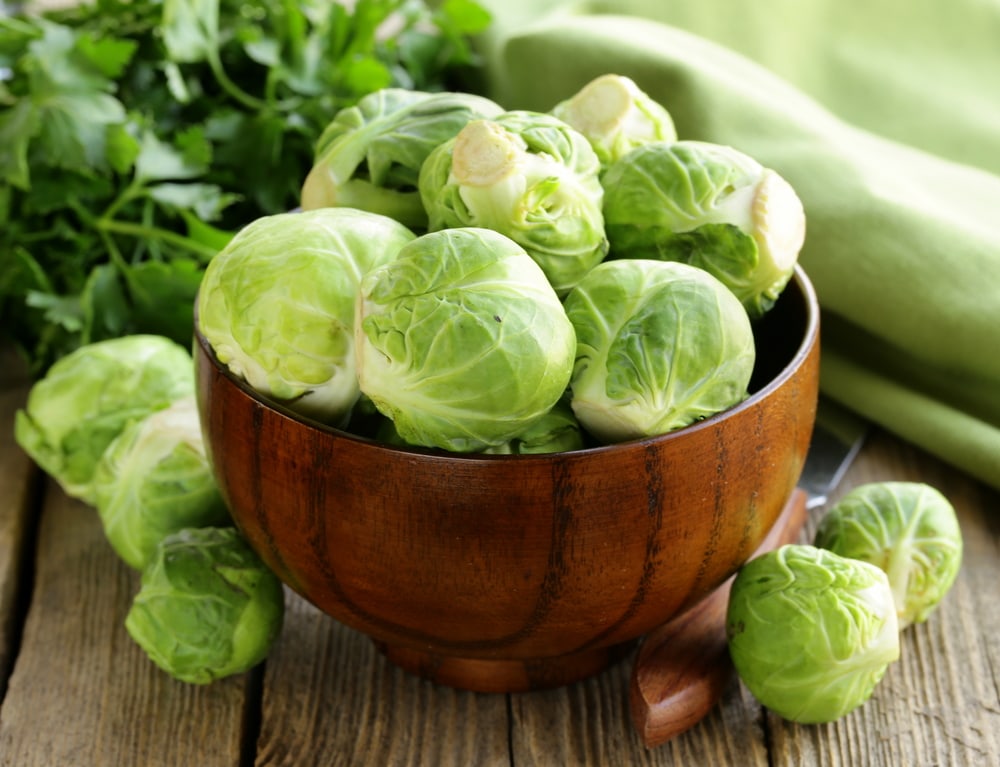
| USDA Hardiness Region: | 3 to 10 |
| Sun: | Sun/partial shade |
| Soil: | Moist, well-draining |
Churchill is another hybrid variety that can reach maturity quite fast. It only takes 90 days for churchill to become harvest-ready, which is excellent compared to other species. Gardeners could have issues with these Brussels sprouts as they won’t grow if it’s hot. However, these sprouts are quite giving, and you can get over 14 ounces of churchill per plant. Ideally, you can plant these sprouts in either fall or spring to get the best harvest.
- Reaches maturity fast
- Good harvest
- Can’t grow well if it’s too hot
6. Redarling
| USDA Hardiness Region: | 3 to 8 |
| Sun: | Partial shade |
| Soil: | Well-draining, rich, moist |
When we talk about the best Brussels sprout varieties to grow at home, we have to mention redarling. These sprouts are purple-red, and they hold their color even after cooking which makes them stand out. This species takes longer to mature, so it will be harvest-ready 140 to 145 days after planting. You can grow these in multiple USDA hardiness zones. However, they have perfect colder weather, so they’ll succeed in colder zones.
- Stunning color
- Suitable for multiple USDA hardiness zones
- Grows better in colder zones
- Takes a long time to mature
7. Long Island Improved
| USDA Hardiness Region: | 3 to 7 |
| Sun: | Partial shade |
| Soil: | Moist, well-draining |
Long island improved is the best Brussel sprouts variety to grow in colder climates as it has the best cold tolerance qualities. Also, the cold weather enhances the taste of these sprouts, making them even more appealing. Because of that, this is one of the most widespread varieties in today’s market. The sprouts are medium-sized and have a slightly nutty, buttery flavor that’s unique compared to other sprouts. They need 100 days to reach maturity.
- Extremely cold tolerant
- Cold weather enhances the taste
- Fast to mature
- Won’t succeed in hot climates
8. Jade Cross
| USDA Hardiness Region: | 3 to 8 |
| Sun: | Partial shade |
| Soil: | Well-draining |
Jade cross is another excellent Brussels sprout variety that produces tiny but tasty sprouts with a rich flavor. They have a great shelf life and good freezing qualities. This hybrid is disease resistant and cold tolerant, which makes it the perfect growing option, even for beginner gardeners. Another excellent feature of these Brussels sprouts is they take only 85 days to mature, meaning they’ll be harvest-ready in no time. This variety even won awards for its taste and looks, so certainly try it out.
- Award-winning variety
- Excellent freezing qualities
- Disease resistant
- Cold tolerant
- Fast to mature
- Difficult to find
9. Gustus
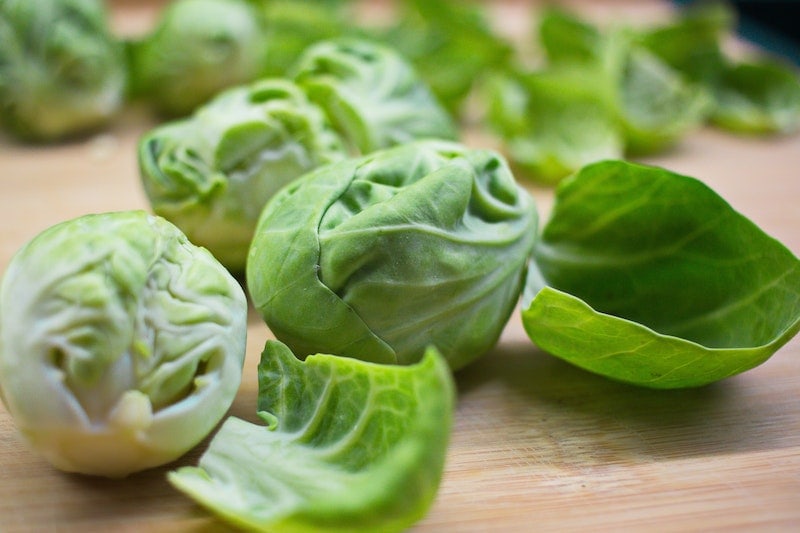
| USDA Hardiness Region: | 3 to 9 |
| Sun: | At least 6 hours of direct sunlight |
| Soil: | Moist, rich, well-draining |
Gustus is among the newer Brussels sprouts varieties, but it has become popular quite fast. It produces medium sprouts on a 24-inch stalk. These veggies are sweet in flavor, and the plant will give you enough sprouts for a good harvest. Gustus takes 100 days to mature, and it has excellent freezing qualities, so you can store these sprouts for a long time. This is the perfect choice for people looking for a low-maintenance variety that becomes harvest ready fast.
- Low maintenance
- Good harvest
- Fast to mature
- Not as popular as other varieties as it’s fairly new
10. Nautic
| USDA Hardiness Region: | 3 to 9 |
| Sun: | At least 6 hours of direct sunlight |
| Soil: | Well-draining, moist |
Nautic is a Brussels sprout variety that will give you the largest harvest out of all other species. The yields are constantly high, and one plant can bear over 12 ounces of veggies. The sprouts are sweet and buttery, and they need around 120 days to reach maturity. This variety has excellent disease resistance qualities, so you won’t have to worry about possible issues with diseases. By planting just a couple of these sprouts, you could potentially grow a yearly supply to last until the next planting season.
- Large harvest
- Disease resistant
- Not cold tolerant
11. Dagan
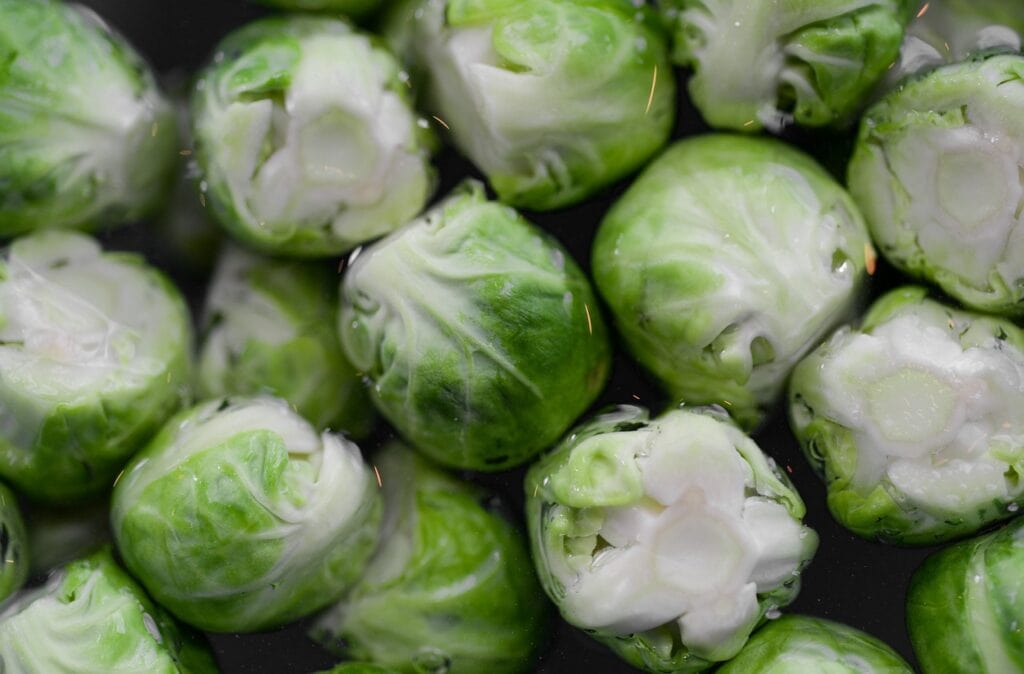
| USDA Hardiness Region: | 3 to 9 |
| Sun: | At least 6 hours of direct sunlight |
| Soil: | Well-draining |
Dagan is a Brussels sprout variety that grows tall and high, producing bright green sprouts. This is another hybrid variety that reaches maturity quite fast, about 100 days after planting. However, the sprouts can stay on the plant, so you don’t have to harvest them right away. The sprouts are attached to the plant with a small nub, making it easy to snap them off.
- Easy to snap off
- Fast to mature
- Not cold resistant
12. Hestia
| USDA Hardiness Region: | 3 to 8 |
| Sun: | At least 6 hours of direct sunlight |
| Soil: | Moist, well-draining |
Hestia is a famous Brussels sprouts variety that even won the All-America Selections award in 2015. This cultivar produces light green sprouts with a nutty, buttery flavor and yellow interior. These sprouts are sweet by nature and don’t need frost to enhance their taste. However, you can allow them to go through a light frost if you want them to taste even better. Hestia needs around 95 days to mature and become harvest ready.
- Fast to mature
- Sweet taste even without frost
- Award-winning species
- Not cold tolerant
13. Mighty
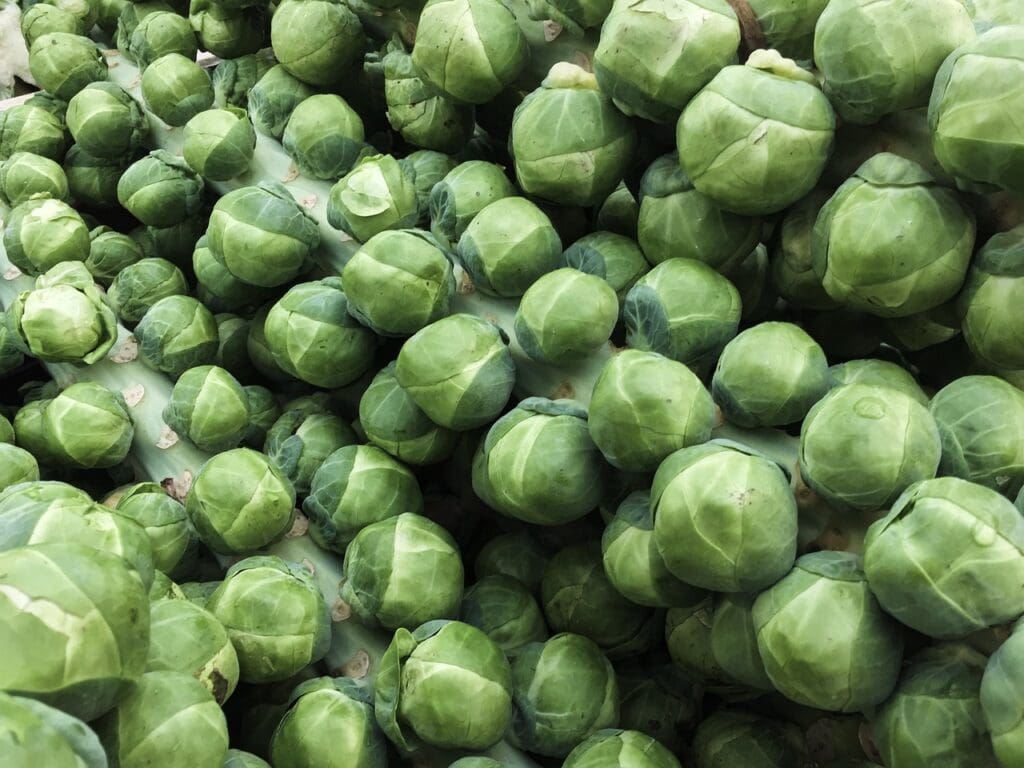
| USDA Hardiness Region: | 3 to 8 |
| Sun: | At least 6 hours of direct sunlight |
| Soil: | Well-draining, moist, rich |
Mighty is an impressive Brussels sprouts species with medium-sized sprouts and a nutty flavor. The sprouts are round and uniform, so they’ll look beautiful on your kitchen table. While these sprouts are not completely disease resistant, they have resistance to common diseases like leaf spot, mildew, and Alternaria. This variety will be harvest-ready 100 days after planting. As it’s typically not grown commercially, you’ll need to plant these yourself to get a chance to get a taste.
- Resistant to some diseases
- Beautiful appearance
- Fast to mature
- Not grown commercially
14. Tasty Nuggets
| USDA Hardiness Region: | 4 to 9 |
| Sun: | At least 6 hours of direct sunlight |
| Soil: | Well-draining, moist |
Tasty nuggets have really earned their name as these sprouts are small and sweet. The plants provide a large harvest on a 24-inch stalk. This variety is one of the fastest-maturing available Brussels sprout varieties, and it takes 78 days to reach maturity. Unlike other varieties, these sprouts prefer slightly warmer climates, so you can grow them even in warm USDA hardiness zones. Unfortunately, this is another species not sold commercially, so you have to grow them to get a chance to taste them.
- Fast to mature
- Tasty buds
- Grows in warmer climates
- Not sold commercially
Conclusion
Carefully read through information about each variety before deciding on which Brussels sprouts to grow in your garden. Some species have better cold tolerance qualities, while others prefer warm weather. Try to compare all pros and cons and choose the type that will succeed and thrive in your environment.
Featured Image Credit: Hans, Pixabay
Contents
